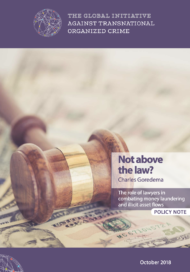Posted on 20 Dec 2005
Some 200 million people, or 5% of the world’s population age 15-64, have used drugs at least once in the last 12 months. This is 15 million people higher than last year’s estimate but remains significantly lower than the number of persons using licit psychoactive substances (about 30% of the general adult population use tobacco and about half use alcohol). The number of cannabis users worldwide is now close to 160 million people or 4% of the population age 15-64. Estimates of the number of ATS users – 26 million people using amphetamines and 8 million using ecstasy – are slightly lower than those of last year’s World Drug Report (WDR), reflecting declines of methamphetamine use in South-East Asia (notably Thailand) and of ecstasy use in North America (notably in the USA). The number of opiate users is estimated to have risen slightly to around 16 million people (11 million of which abuse heroin), mainly reflecting increasing levels of opiate abuse in Asia. No significant changes were observed in most other parts of the world. The number of cocaine users – close to 14 million people – rose slightly.
Unsurprisingly, the main problem drugs at the global level continue to be the opiates (notably heroin) followed by cocaine. For most of Europe and Asia, opiates continued to be the main problem drug, accounting for 62% of all treatment demand in 2003. In South-America, drug related treatment demand continued to be mainly linked to the abuse of cocaine (59% of all treatment demand). In Africa, the bulk of all treatment demand – as in the past – is linked to cannabis (64%).



